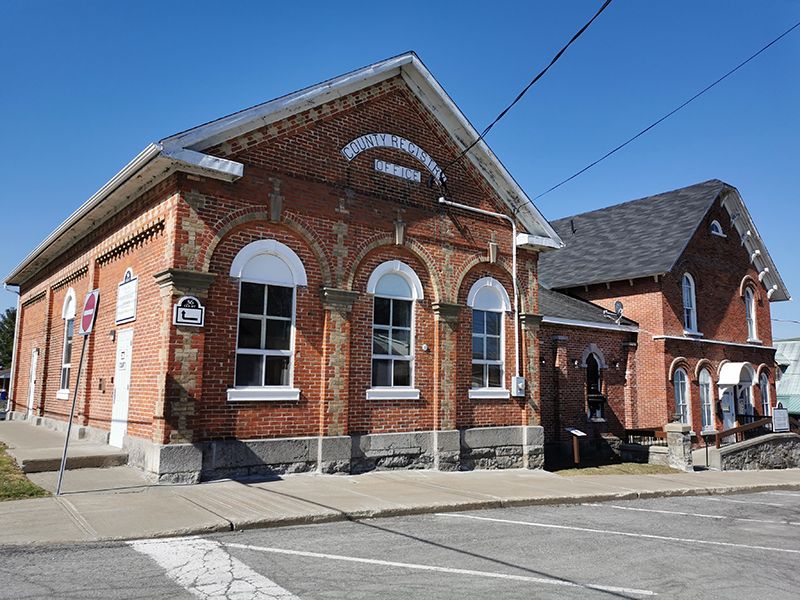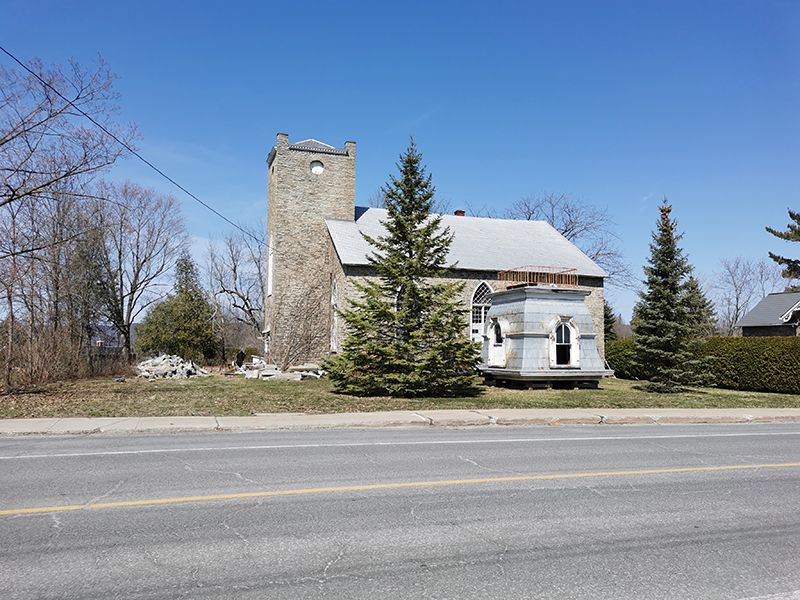A few weeks ago, we told you about a project involving a muncipally-designated property that was about to undergo some changes. Champlain Township council passed a resolution instructing its bylaw department to issue a building permit to Claude Brabant, owner of the former St. Andrew’s Presbyterian Church, so that he could proceed with exterior renovations, which include creating an entrance fronting on King Street in L’Orignal, as well as using the cupola, or top portion of the now-demolished convent in Vankleek Hill as part of the entrance design.
The Review spoke with Champlain Township Senior Planner Jennifer Laforest about Champlain Township’s heritage properties and what municipal designation means.
In Champlain Township at the moment, there are seven properties of interest. In L’Orignal, 36 Court Street, 52 Wharf Street and 1008 King Street have bylaws connected to them which include municipal heritage designation.
Built in 1825, the L’Orignal courthouse and the Old L’Orignal Jail (59 Court Street) and Duldraeggan Hall, (circa 1821) at 129 Front Road, have municipal bylaws recognizing them as municipal heritage properties.

The United Counties of Prescott and Russell owns these buildings, having purchased them from Claude Brabant in 2015. Photo: Louise Sproule
This register can be found on the Ontario Heritage Trust website, but does not mean that they are provincially-designated heritage properties.
The Higginson Tower, owned by Champlain Township, is likewise a heritage property, designated as such by council. Its construction date is listed as 1825.
Some of the bylaws which contain the designation are older bylaws, says Laforest. For example, the bylaw related to St. Andrew’s Church on King Street dates back to 1984, when it was the Village of L’Orignal which passed the legislation.
The designations do not prohibit or prescribe the type of renovations or construction and the challenge, according to Laforest, is to identify the municipality’s intent when it enacted the bylaw to designate heritage properties.
Input is currently being analyzed from residents as the township prepares to create a strategic plan and there should be an indication of whether residents value local heritage. But Laforest points out, the decision regarding if, when and how to protect municipal heritage ultimately resides with council.
In order for council to retain the power to review applications for building demolitions before they are issued, a heritage district designation or an individual municipal heritage designation would need to be in place. These would require heritage inventories, architectural assessments and/or urban design studies prior to formal adoption. These supporting documents help to ensure that heritage components are clearly outlined and that development/redevelopment opportunities are clarified.
Additional amendments to the Ontario Heritage Act have passed but are not yet in force. These changes primarily address the role of the Conservation Review Board and the appeal process for designation bylaws to the Local Planning Appeal Tribunal.
Bylaws, too, can contain more detail and mention specific characteristics of a building that are the purpose of the designation.
“For instance, if a building has a particular style, one would hope that changes or renovations would be what is called subordinate to that. If changes were made to a 1920s Art Deco building, one could have a descriptive bylaw which would outline what is special about that building — it gives municipalities the chance to manage changes to heritage buildings,” Laforest said.


